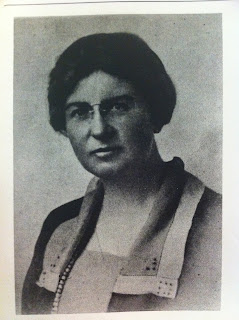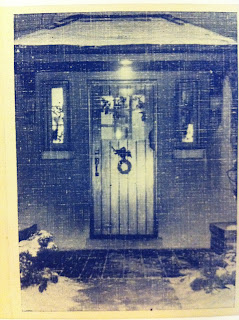from
United States Department of the InteriorNational Park Service The Village of Saranac Lake
NATIONAL REGISTER OF HISTORIC PLACES
The dense urban streetscape of the village of Saranac Lake, New York, is a marked
contrast to the vast stretches of unpopulated forest and tiny isolated hamlets which
exist in the Adirondack region. The extraordinary building stock of Saranac Lake,
with its multiple porches and walls of windows, its sophisticated conmercial blocks
and elegant residential districts, is the unique legacy of more than seventy years
when this community was an international center for the the treatment of pulmonary
tuberculosis. Here doctors developed the first successful methods of treating - and
even curing - a disease which had been the equivalent of a death sentence for almost
all of recorded history. In so doing, they also developed a specific building type -
the cure cottage - designed to facilitate the healing process for tubercular patients.
Many of these cure cottages still stand in Saranac Lake, the most visible reminders of
the village's days as America's "Pioneer Health Resort."
The incorporated Village of Saranac lake is located in the Adirondacks, a jagged
outcropping of mountainous peaks sliced by rapid-flowing streams and dotted with clear
glacial lakes, which juts up out of the glacial plains of upstate New York. Six
million acres of this rugged country and its isolated valley hamlets are part of the
Adirondack Park, where 2.5 million acres of state-owned forest land have been
protected as "forever wild" since as early as 1885. Deep in the heart of this
wilderness, in a sheltered valley crossed by the winding Saranac River, lies "the
little city of the Adirondacks."
The modern village of Saranac Lake is still the largest settlement within the
Adirondacks. Its political boundaries cross both county and town borders: two-thirds
of the village lies within the town of Harrietstown, in Franklin County; while the
remaining third is split between the towns of North Elba and St. Armand in Essex
County.
***
The quest for health in the nineteenth century was more than the narcissistic
self-improvement fads of modern times. For many/ the search was a matter of life or
death. The "White Plague" ran rampant for much of the century. Ihe number of Americans
infected with tuberculosis in the nineteenth century was as great as the combined number
of cancer and heart disease patients today. By 1873 tuberculosis, also called
consumption, killed one out of every seven Americans in a slow but unalterable physical
decline.
It was primarily a lung disease, but the tubercle bacillus could attack
any part of the body. Once lodged, the infection spread unchecked, steadily wearing
down the body's defense system, and eventually creating cavities in the lungs. At its
more advanced stages the best known symptoms were coughing, night sweats, paleness,
weight loss, virulent sputum, and spitting up blood. There was no known cure.
Transferred by airborne bacilli, the disease spread rapidly in enclosed or crowded
environments, threatening immediate family members as well as neighbors. Slum dwellers
and struggling factory workers were especially vulnerable, as were the very rich,
paradoxically, who employed servants from poor living conditions who unknowingly
harbored the disease. The disease did not confine itself to the very old and the very
young, but instead most frequently struck people in the prime of their life. [7]
In its sheltered position in a deep basin of hills, the village of Saranac Lake nad
begun to attract invalids as early as 1860 with the opening of Martin's Hotel. Until
the 1870s, however, none of these patients seemed to have braved the frigid winters of
the Adirondacks. Ihe first tubercular patient credited with staying year-round in
Saranac Lake was Mr. Edward C. Edgar who spent the winter of 1874 at the boarding
house run by the wife of Lucius Evans, a well-known local guide. At this time, the
village of Saranac Lake was little more than a saw mill, a small hotel for guides and lumbermen, a schoolhouse and perhaps a dozen guides' houses scattered over an area of an eighth of
a mile.
***
In the summer of 1883, Trudeau suggested the idea of a semi-charitable sanitarium
for the study and cure of tuberculosis to
Anson Hielps Stokes, a New York bankersummered nearby at St. Regis Lake. Stokes immediately contributed five hundred dollars
to Trudeau's proposal. Ihe St. Regis camp owners and their friends vacationing at Paul
Smiths became the backbone of financial support for the Adirondack Cottage Sanitarium^
Dr. Loomis and other prominent doctors offered their professional support. Local
guides and residents chipped in to buy sixteen acres of a sheltered hillside overlooking
the valley and donated the land to Trudeau's new project.
Trudeau modeled his fledgling institution on one founded in Goebersdorf, Germany, in
1852 by Dr. Hermann Brehmer, who advocated a climatological treatment for tuberculosis,
bringing patients to higher mountain altitudes where the combination of fresh air,
exercise, ample rest, and good food could effect their cure. By 1884, only a handful of
sanitoria were available for healthseekers - and all of them were in Europe. Trudeau
opened his Adirondack Cottage Sanitarium in February 1885 with the completion of an
administration building and three small cottages, including Little Red," a one-room
cottage with a small porch. Trudeau's first two paying patients, Alice and Mary Hunt,
sisters who worked in a New York City factory, occupied "Little Red," a one room cottage
with a small porch.
For most of the nineteenth century, the term "sanitarium" was applied to all chronic
care institutions. Coming from the Latin word sanitas, meaning health, its most common
meaning is "health resort." Today it is most commonly the designation for mental health
institutions because of its close etymological links with the word "sanity." By the
early 1900s, however, a place for the treatment of invalids, particularly consumptives,
was more often called a "sanatorium," from the Latin word sanare, which means to cura or
heal. Trudeau christened his institution the Adirondack Cottage Sanitarium in 1885.
After his death, it was renamed the Trudeau Sanatorium.
***
For most of the nineteenth century, invalids in search of health took up residence
in public hotels in the mountains. As the infectious nature of tuberculosis became
known, however, tourist hotels throughout the Adirondacks began to refuse tuberculosis
guests. Some villages would not even allow them as residents. As a result, more and
more invalids came specifically to Saranac Lake, and the number of private cottages
catering to the needs of the sick jumped. By 1890, the village's population had tripled
to 1,582 and in the next thirty years, it would more than quadruple in size. Throughout
the village, the pace of building slowly began an acceleration that would last for the
next thirty years, imbuing the community with a sustained boom economy, and a boom
psychology as well.
Up at the "San" (the Adirondack Cottage Sanitarium), Trudeau's fundraising efforts
continued to expand the facilities available for patients. In 1890 alone, three more
cottages and an open air amusement pavilion were added. Ihe first year's figures had
shown about 25% of the tuberculosis cases were arrested, and his success rate continued
to show promise. Because the Adirondack Cottage Sanitarium only took needy patients, in
the early stages of their disease, there was a great need for patient housing for those
who were too sick or too wealthy to cure at the San. local residents began to take
patients into their homes or to open houses which functioned as private commercial
sanatoria. Holding fewer than twenty patients and most often around twelve, these
private sanatoria became known as "cure cottages."
***
The hilly open pastures which lay east of Church Street, between the riverside core
of the village and the Old Military Road (Pine Street), were next divided to create the
first large residential subdivision in the village. In 1892 Frederick A. Isham, a lake
Placid attorney, formed a partnership with the Orlando Bloods to divide 21 acres of
sheep pasture into 174 "Villa Sites." This became Helen Hill, named for its central
artery, Helen Street, which climbed straight up the steep slope. Soon the hill was
covered with houses, many of them private homes for prominent local citizens and/or
wealthy health seekers. Over the next twenty years, as the original owners died or
moved away, many of the houses were converted into commercial private sanatoria, growing
and changing to suit their new use, a pattern repeated along Church Street below.










